Virtual Factory Tour
Click Aydin Logo for virtual factory tour.
Packing Instructions of Hand Made Turkish Ceramics:
Ceramic Clay Composition: The cornerstone of ensuring our Turkish handmade ceramics are delivered safely lies in our unique ceramic clay formula, fired at 1050 degrees. This process yields ceramics that are both sturdy and less prone to breakage, a vital aspect of our production.
Specialized Packaging: Each piece of our Turkish handmade ceramics is encased in its own protective packaging, ensuring safe transit. We offer both bulk and individual packaging options, and can accommodate custom packaging requests, allowing customers to personalize their orders.
Palletized Shipping: Regardless of the size of the order, from 1000 to 50.000 pieces, we employ palletized shipping for our ceramics. All pallets are treated, stamped, and certified to ensure the highest standards of quality and safety.
Reduced Plastic Packing Material Usage: We consciously use minimal plastic in our packaging, both to expedite unpacking for our clients and to reduce our environmental impact.
Renewable Paper & Plastic Use: All the packing materials that we use as brown boxes, cartoons, plastic bubble wraps are made of renewable materials to support the sustainability of the world.
Export & Transport Instructions of Hand Made Turkish Ceramics:
Our Kutahya-based factory exports hand made turkish ceramics through various methods, utilizing Istanbul’s different ports to all over the world. You may find the shipping methods below.
Sea Transport: We offer both Full Container Load (FCL) and Less than Container Load (LCL) sea shipping options, tailored to the client's needs. This method is recommended for large orders or distant destinations like the USA, Canada, Australia, and China.
Air Freight: Ideal for smaller orders, such as single or 2 pallet orders, air freight is available worldwide, especially useful for locations distant from sea ports. We ship from Istanbul Ports.
Truck Delivery: For nearby destinations, such as countries within the European Union, Russia, and Iran, truck delivery is an efficient and practical option. This method offers shorter delivery times and is our most commonly used method for these regions.
Transport Coordination: We tailor transport solutions to each customer’s requirements, offering door-to-door delivery based on our quotation. Alternatively, customers can direct their preferred transport company to us.
For any inquiries about our exporting and packing processes, please contact us at [email protected]
Producing Handmade Turkish Ceramics : A - Z Step-by-Step Guide

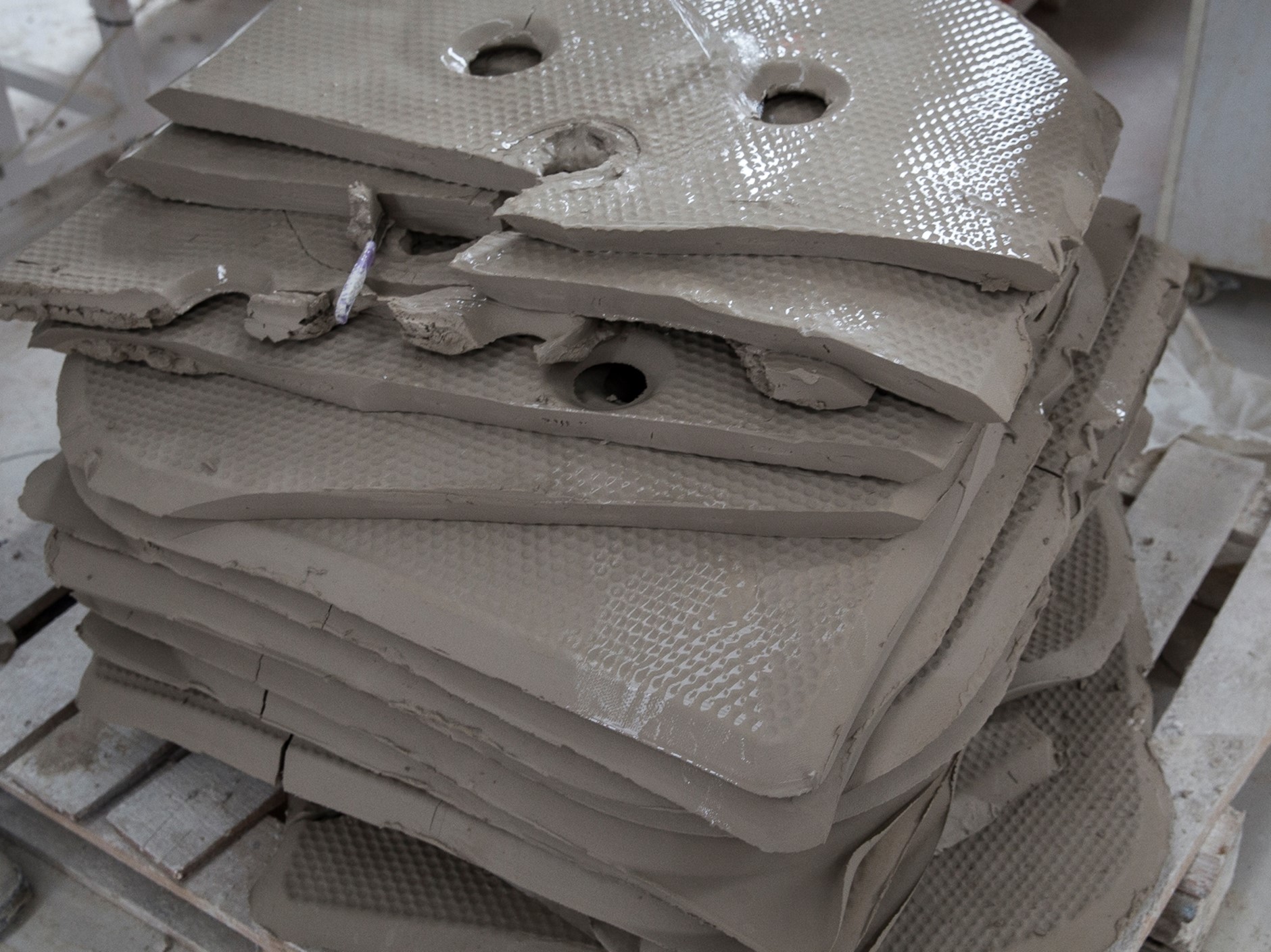
The creation of handmade Turkish ceramic clay involves a meticulous process that begins with the careful selection of top-grade raw materials. This guide outlines the key steps in producing the high-quality ceramic clay used in traditional Turkish ceramics.
Selection and Inspection of Raw Materials: We commence by selecting the finest raw materials, ensuring they meet our stringent quality standards upon arrival. This initial step is crucial to maintain the consistency and quality of our final product.
Custom Clay Formulation: These raw materials are then blended with our unique ceramic recipe, specifically formulated for crafting handmade Turkish ceramics. This special blend is the cornerstone of our ceramic’s distinctive quality and characteristics.
Incorporation of Additional Water: To facilitate thorough mixing, extra water is added to the mixture. This step is crucial for achieving the right consistency in the clay. The mixture is then transferred to a slow mixer for even and gentle blending.
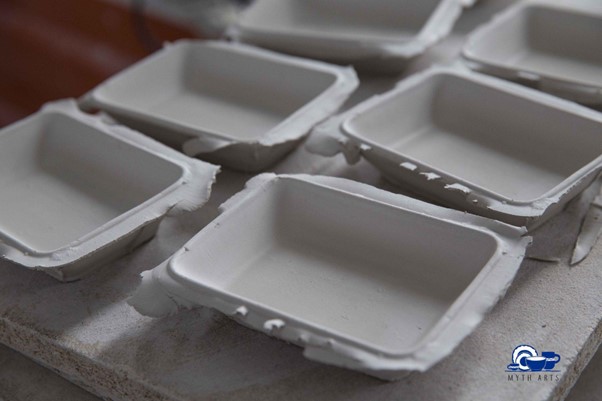
Moisture Reduction through Filter Press: After mixing, the clay mixture is transferred to a filter press. Here, excess water is extracted, which can be recycled for use in subsequent production cycles. This process is essential for achieving the desired clay consistency.
Retrieval of Ceramic Clay: The final step involves retrieving the prepared ceramic clay layers from the filter press. At this stage, the clay is ready for shaping and crafting into various forms of Turkish ceramics.
Our dedication to using the finest raw materials and following a precise, traditional recipe ensures the exceptional quality of our handmade Turkish ceramic clay, a testament to our commitment to craftsmanship and heritage.
For further information about our ceramic clay production process please contact us at [email protected]
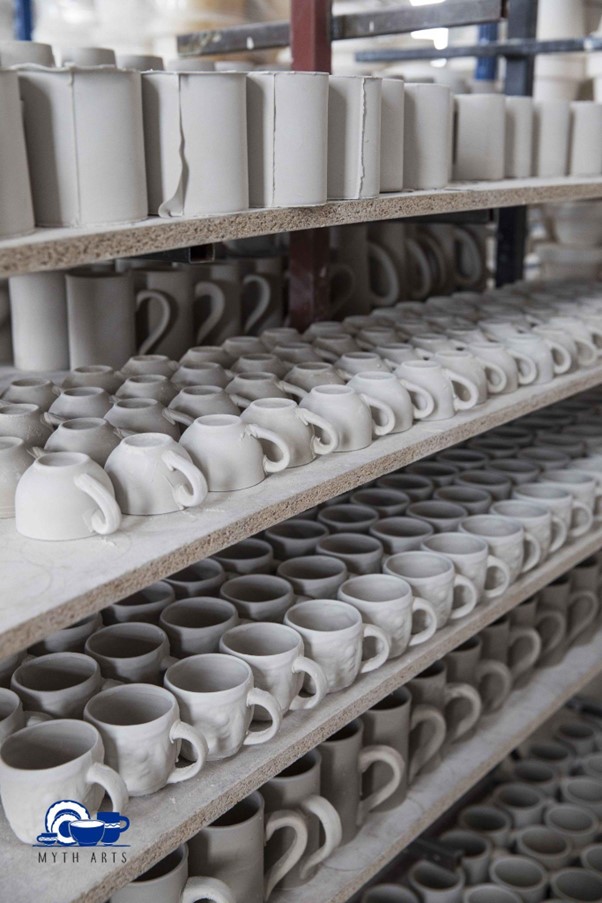
This overview aims to shed light on the intricate process of producing handmade Turkish ceramics. Our range encompasses a variety of shapes and sizes, including ceramic plates, bowls, cups, dinnerware, and souvenirs. Crafting these diverse items requires employing multiple specialized techniques. Below, we detail the key stages involved in the production of Turkish ceramic clay.
Clay Sizing: The initial step in crafting handmade Turkish ceramics involves tailoring the size of the ceramic clay. This preparation is crucial and varies depending on the desired production technique and the specific dimensions of the intended biscuit (or ceramic base).

Slip Casting Process(shaping): Slip casting involves the use of a more fluid type of ceramic clay, designed to fill 3-4 piece molds effectively. We pour this liquid clay into molds and allow it to set, taking on the mold’s shape. Subsequently, the formed raw biscuit is carefully removed from the mold for further processing.
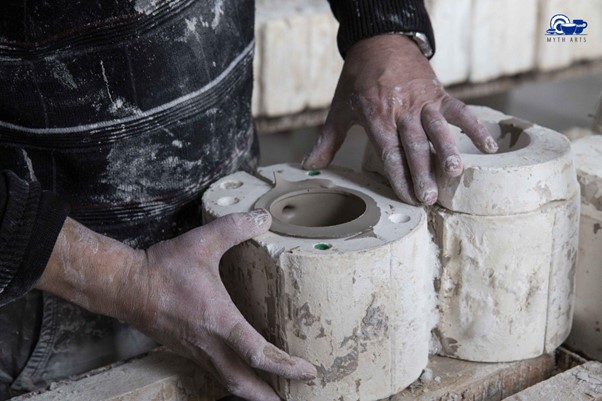
Jiggering for Bowl and Automic Cup Line Shaping: Jiggering is a technique primarily used for creating ceramic bowls, mugs, and cups, with optimal sizes ranging from 5cm to 16cm in diameter and up to 17cm in height.
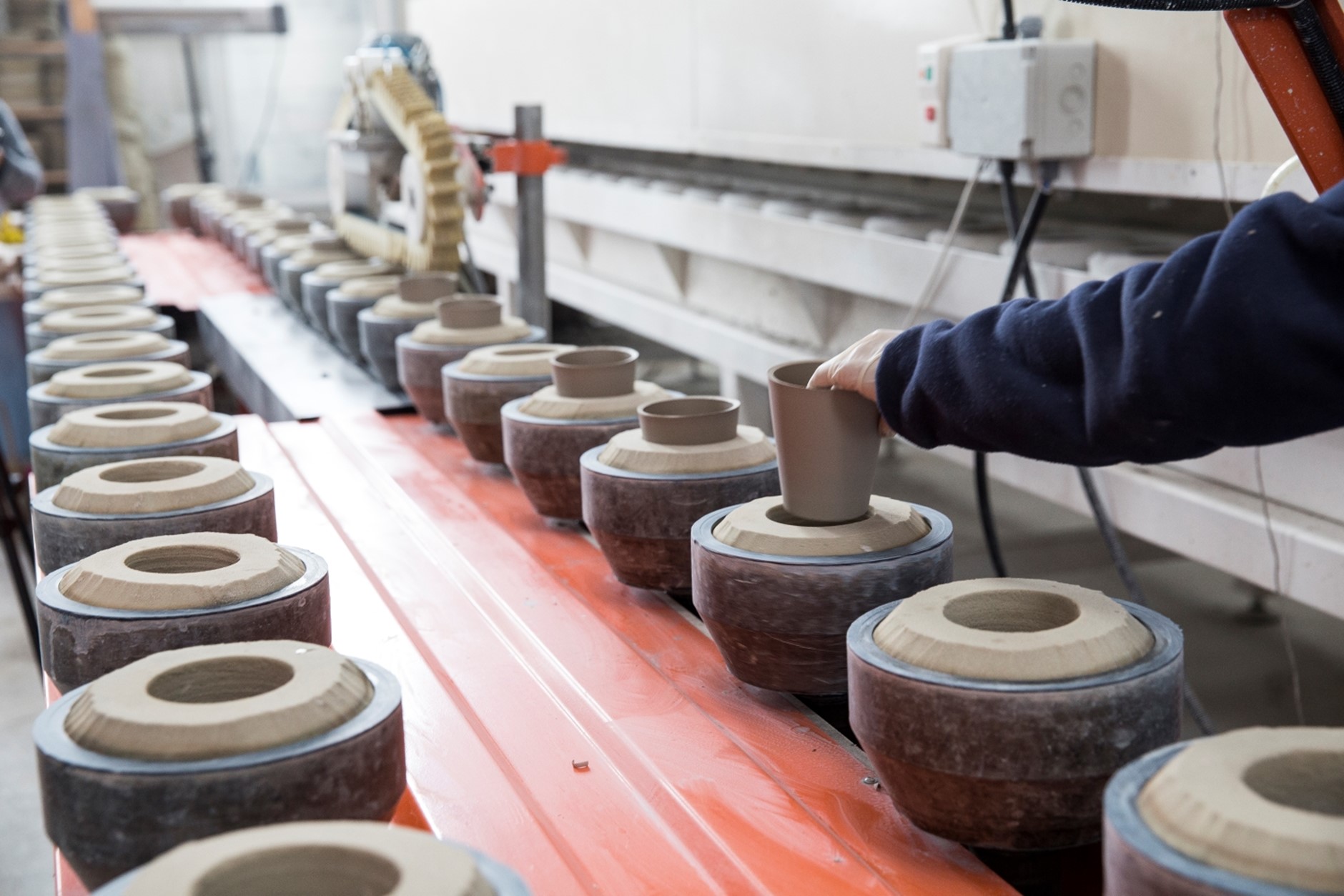
Press Shaping Method: This method is particularly suited for crafting rectangular-shaped ceramics and items with a maximum height of 7cm. It’s commonly used for making plates, platters, and appetizer sets through a ceramic press.
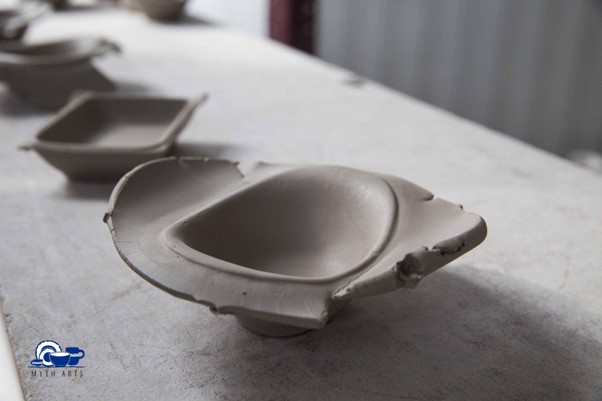
Refining Raw Biscuits: Once shaped, the raw biscuits undergo a retouching process using sponges, which can be done either manually or with machines, depending on the complexity of the shapes.
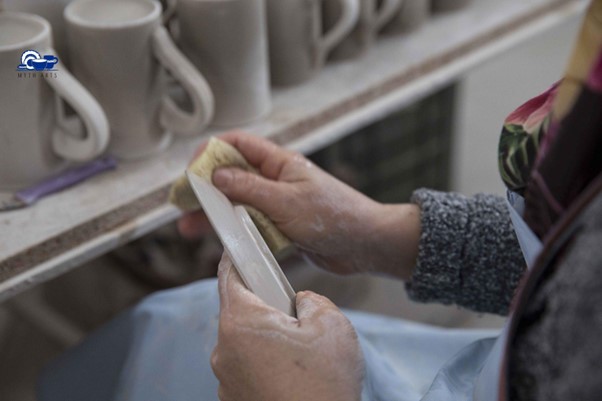
Biscuit Kiln Firing: The raw ceramic shapes are fired in a kiln for approximately 9 hours, followed by a 5-hour cooling period. This step is essential for hardening the ceramics.
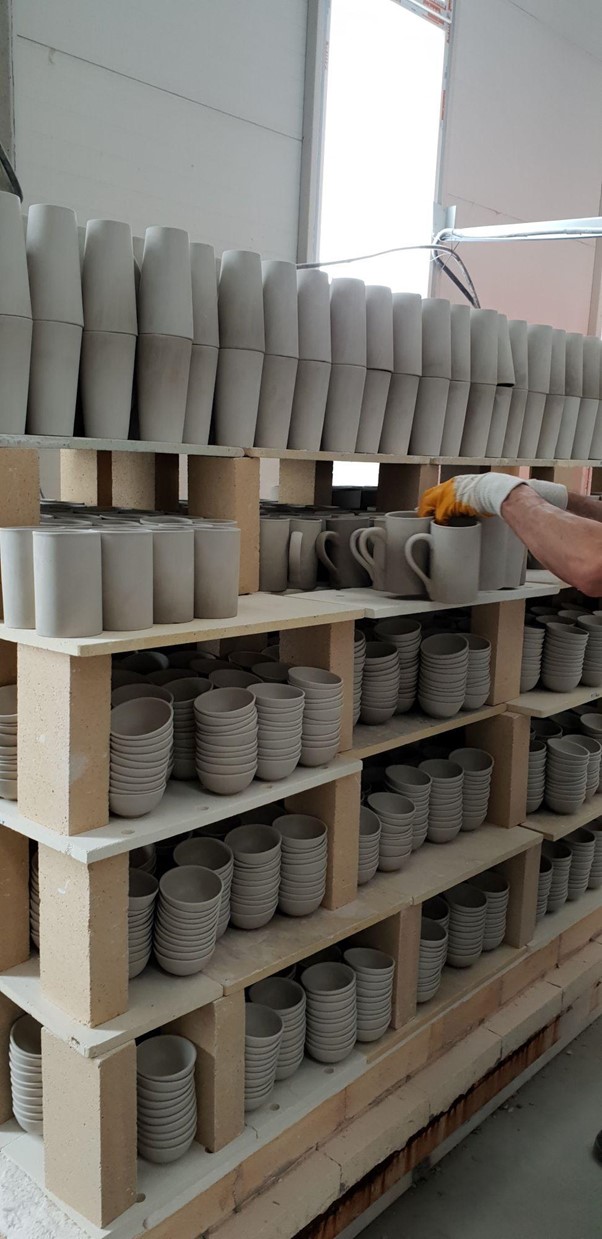
Post-Kiln Processing: After kiln firing, each biscuit is meticulously inspected and then moved to our storage facility, awaiting the next phase of decoration and painting.
Our commitment to traditional methods and attention to detail at every stage ensures the high quality of our handmade Turkish ceramics. For more information or inquiries, feel free to contact us at [email protected]
The production of handmade Turkish ceramics begins with a crucial step: selecting the appropriate biscuit (or body). This choice is fundamental as it determines the suitability of applying specific designs. For instance, a rectangular body necessitates a matching design. We carefully pair ceramic bodies with the patterns to be applied, offering both traditional and bespoke designs. We produce Dantel, Relief and Pastel decors as classics but also we produce our own decors such as Aegean,Pastel, White Pastel, Multi Eye, Tulip, Pera, Nemo, Earth, Natural Eye, Jardin and contemporary styles. Based on customer preferences, we develop new designs, initiate production upon sample approval, and then proceed with confirmed orders.
Assignment of Ceramic Decors: Each order guides the assignment of specific patterns to the ceramics.
Producing Hand made Ceramic Colors: Selecting the right body and decor leads to the next critical phase: color creation. Our color preparation involves combining clay recipes with color pigments, a vital step in producing authentic Turkish ceramics. Prior to mass production, we conduct sample tests to ensure color accuracy.
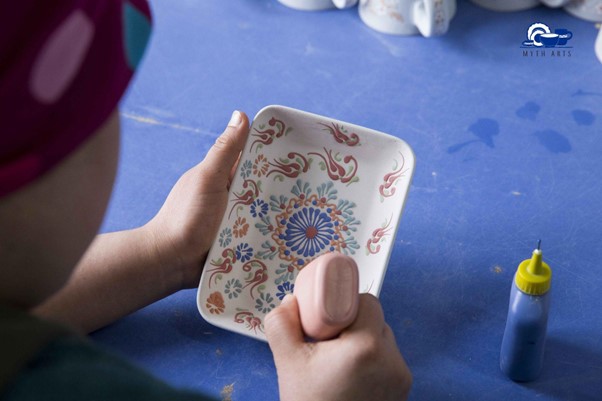
The decoration of each piece involves various techniques, tailored to the design requirements:
Drawing: Outlining the design using pencils, brushes, or sponges, depending on the pattern.
Painting: Applying color through brush painting, pump painting, or glazing.
Scraping: Employed for Relief designs, where patterns are etched out.
Sponging: A technique used for certain textures and effects.
Each technique is selected based on the pattern’s requirements.
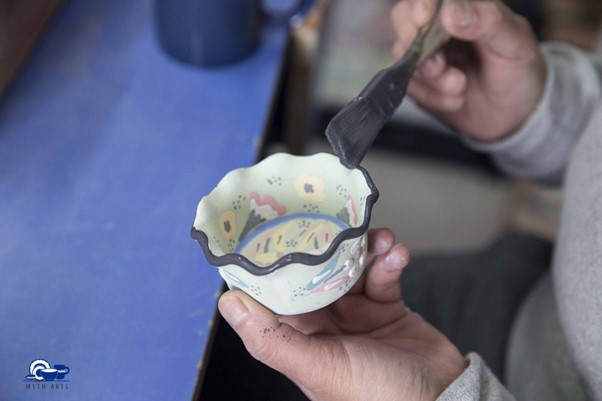
Once the drawing and painting stages are complete, we meticulously retouch the ceramics before glazing. Handcrafting ceramics requires constant attention to detail and quality control. Post-retouching, the ceramics undergo a thorough quality check before being sent to the glazing unit.
All the hand painted turkish ceramics glazed before second fire at our high capacity kilns. We do second fire around 1070 degrees celsius for 12 hours including heating and cooling down. Each kiln car work with a capacity of 2000 pcs average capacity that can be change according to the sizes of the loaded products.
After cool down the products are taken to warehouse according to their produced quality.
After warehouse staff receive the fired and quality controlled products from second fire, the warehouse start to packing according to customer request such as hang tags, barcode, labels or etc notes.


